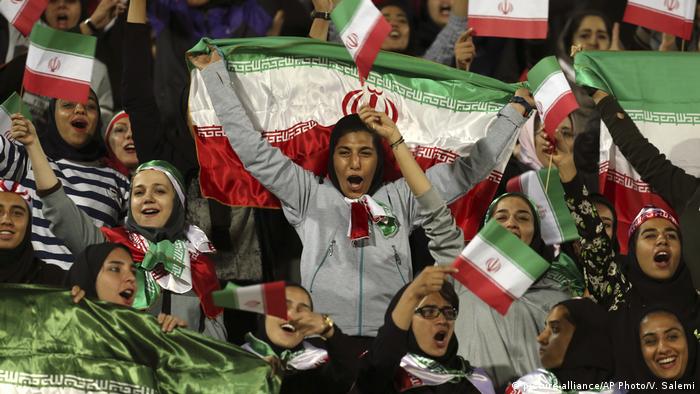Education in Iran
Women’s rights movement in Iran
Radif, the repertoire that he developed within the 19th century, is the oldest documented model of the seven dastgah system, and is considered a rearrangement of the older 12 maqam system. Not much is understood on the music scene of the classical Iranian empires of the Medes, the Achaemenids, and the Parthians, apart https://yourmailorderbride.com/iranian-women/ from a couple of archaeological stays and some notations from the writings of Greek historians. According to Herodotus, the magi, who have been a priestly caste in historical Iran, accompanied their sacrifice rituals with singing.
Women’s clothes
Journalist Howard LaFranchi of The Christian Science Monitor has referred to «the normal American respect for different cultural communities and religions underneath the broad umbrella of universal freedoms» as forbidding the banning of Islamic gown. In his distinguished June 2009 speech to the Muslim World in Cairo, President Barack Obama referred to as on the West «to avoid dictating what clothes a Muslim woman should wear» and elaborated that such guidelines contain «hostility» in the direction of Muslims in «the pretense of liberalism».
The Iranian women who had gained confidence and higher training under Pahlavi era participated in demonstrations in opposition to Shah to topple monarchy. The culture of schooling for ladies was established by the time of the revolution so that even after the revolution, giant numbers of ladies entered civil service and better education, and, in 1996. In August 2010, Iran Human Rights reported that seven stoning executions had been carried out over the past four years, and that 14 or more sentences of dying by stoning (for eleven women and three men) were pending.
The Islamic Republic’s anti-smoking campaign is yet another instance of the federal government’s shaky control over its population.
Amnesty International reported that in April 2012, college safety personnel at the Roudehen Branch of Islamic Azad University beat female students who weren’t complying with hijab (Islamic dress) requirements. They additionally claimed stories of quotas proscribing women’s admission to specific college packages («designed to scale back women’s entry to specific fields of study») implemented by the Ministry of Science, Research and Technology. Such restrictions on women’s educational selections were said to violate the prohibition on discrimination and Iran’s obligations beneath worldwide law.
Between 1962 and 1978, the Iranian Women’s Movement gained victories corresponding to the right for women to vote (in 1963, a part of Mohammad Reza Shah’s White Revolution). They have been additionally allowed to take part in public office, and in 1975 the Family Protection Law offered new rights for ladies, including expanded divorce and custody rights and decreased polygamy. Following the 1979 Revolution, a number of laws were established such as the introduction of mandatory veiling and public costume code of females. In November 2016, about 6% of Iranian parliament members were women, whereas the worldwide common was about 23%. Many argued that veiling must be restored to stop further dissolution of the Iranian identity and culture, as from an Iranian viewpoint the unveiled women are seen as exploited by Western materialism and consumerism.
Recently in 2006, the authorities launched a marketing campaign in opposition to the hijab, banning it in some public locations, the place police would stop women on the streets and ask them to remove it, and warn them to not put on it once more. The government described the scarf as a sectarian type of costume which came uninvited to the country. In 2010, Ghiyath Barakat, Syria’s minister of upper schooling, announced a ban on women sporting full-face veils at universities. The official said that the face veils ran counter to secular and educational ideas of Syria.
Most have been learning in STEM fields (science, technology, engineering and arithmetic). Alcohol in Iran is prohibited for Iranian citizens by law since the establishment of Islamic Republic government in 1979. Today, elements of the acts have been reintroduced in Iran, while others are into account. They were dissolved after the revolution, but Special Civil Courts had been re-established in 1979 to adjudicate over matter regarding household law, succession and awqaf. Similarly, some legislative changes have moved household matters in a extra progressive path within the areas of minimum age of marriage, youngster custody and the grounds on which women can request divorce.

Gender specialization continued via college stage the place the fields of primary sciences, medical sciences, and humanities have been studied by a majority of ladies, and agriculture and veterinary science, engineering, and humanities had been pursued mostly by men. Overall, nonetheless, the last decade was characterised by a 3-fold enhance in female enrollment in higher schooling. Progress started to be made towards assuaging some of these restrictions in the 1990s. This led to a lifting of all remaining quotas or bans on finding out explicit fields, accomplished in 1993. By the Nineteen Nineties many of the restrictions imposed on majors were additionally lifted, offering women extra opportunities to pursue a level in fields corresponding to veterinary science that had been banned under the Khomeini authorities.
Pre-Islamic period
Shahrnush Pârsipur turned well-liked in the Nineteen Eighties following the publication of her short stories. Her 1990 novel, Zanân mattressûn-e Mardân (Women Without Men), addressed problems with sexuality and id.
According to Luiza Maria Gontowska, the Iranian court construction contains Revolutionary Courts, Public Courts, Courts of Peace and Supreme Courts of Cassation. Public courts include Civil , Special Civil , First class legal and Second Class Criminal .
Public Higher Education in Iran

Women had been excluded from learning veterinary science, animal husbandry, geology, and natural sources, while men had been precluded from topics corresponding to trend design, obstetrics, and mid-wifery. Of 108 arithmetic and computer science majors, women had been only permitted to check forty three. The authorities additionally established quotas for certain specializations, capping the number of women who might pursue specified majors to ensure against the domination of girls in these topics.
